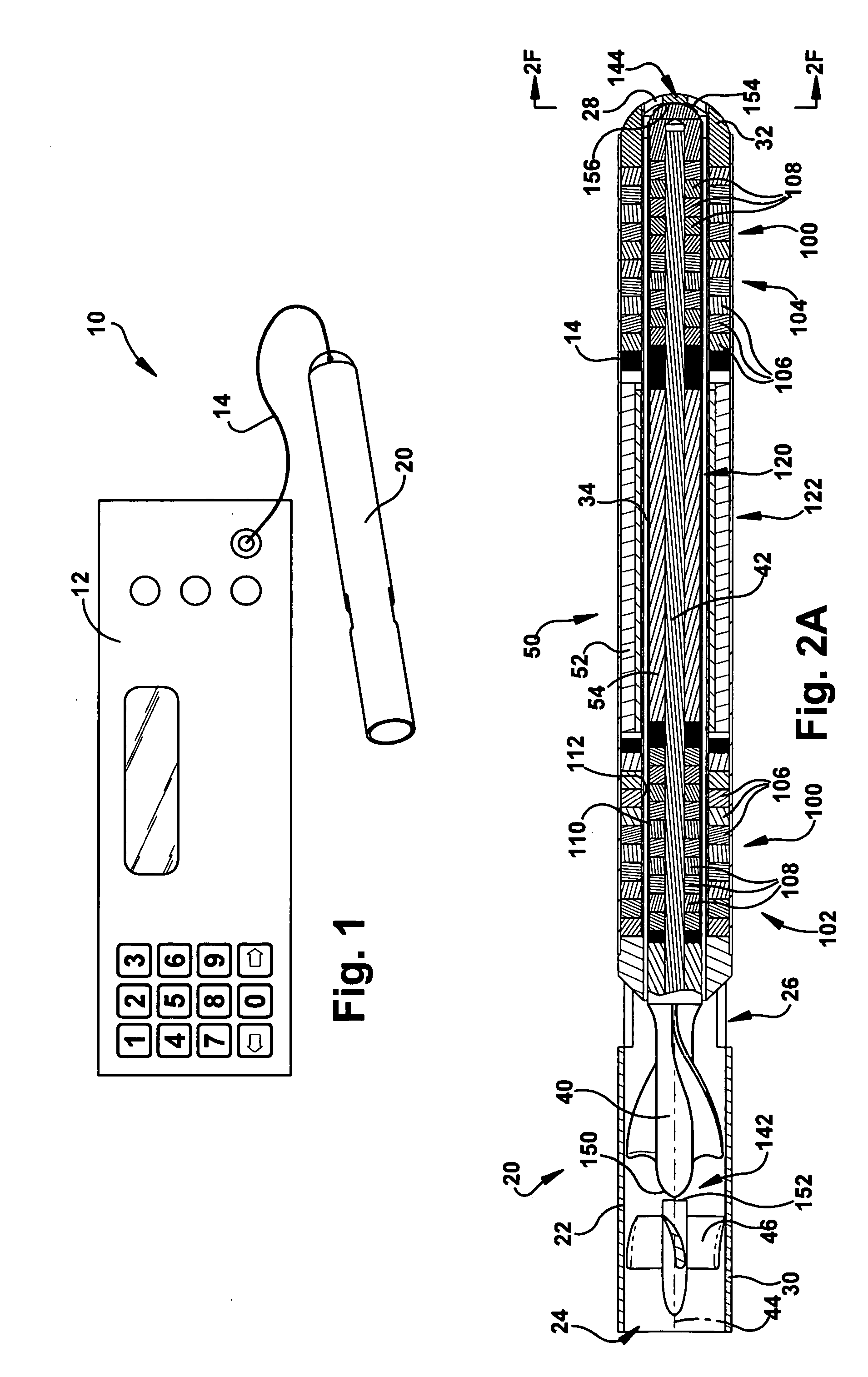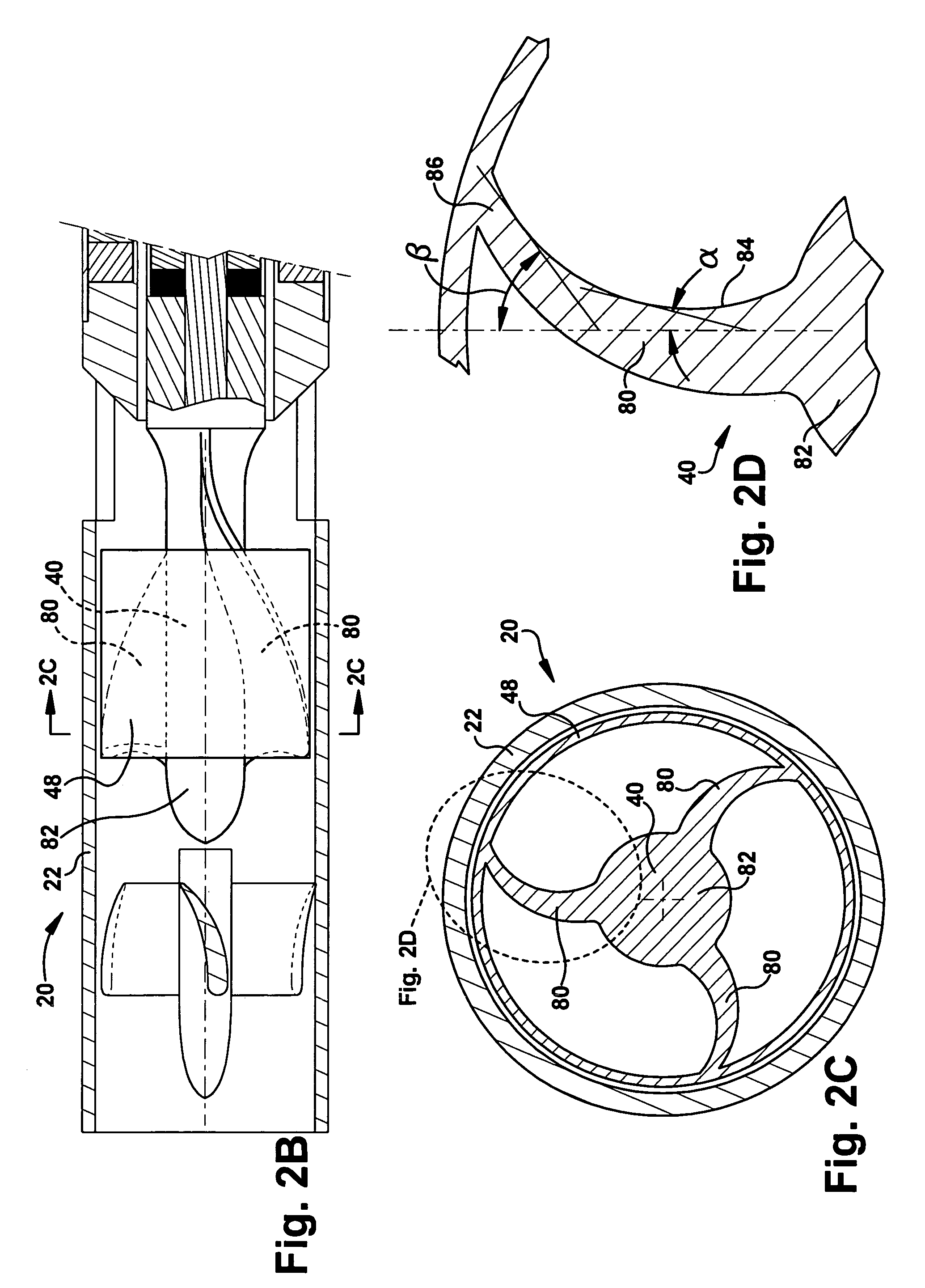Blood pump
- Summary
- Abstract
- Description
- Claims
- Application Information
AI Technical Summary
Benefits of technology
Problems solved by technology
Method used
Image
Examples
second embodiment
[0082] The configuration of the pump head housing 250 of the second embodiment helps facilitate extravascular implementations of the pump 20a. More particularly, the pump head housing 250 helps facilitate discharging blood along the outside diameter of the motor / bearing housing 22a into the outlet cannula 254. The configuration of FIG. 6 permits wash flow in the motor gap 34a through the wash flow ports 28a under the influence of arterial pressure. As an additional feature of the embodiment of FIG. 6, the primary flow, being contained within the outlet cannula 254 next to the motor 50a and motor housing 22a, may also have some enhanced cooling effects on the motor. Since the primary flow of the pump 20a is outside the pump rather than through the motor gap 34a, the motor gap can be kept at a minimum size, which helps reduce the overall diameter and size of the pump.
[0083]FIGS. 7A-7C illustrate intracorporeal extravascular implementations of the pump 20a of FIG. 6. Referring to FIG. ...
third embodiment
[0087] the pump 20b is fit with an outflow sheath 300 for directing the primary mixed flow along the outside of the pump. The outflow sheath 300 has a flexible construction that allows the sheath to be wrapped around an outer surface 302 of the pump 20b during implantation. This is shown in dashed lines at 300′ in FIGS. 8A and 8B. During operation of the pump 20b, the flow expands and unwraps the sheath 300 to the position shown in solid lines at 300 in FIGS. 8A-9. This allows the flow to pass through a radial space 304 defined between the pump 20b and the sheath 300. As shown in FIGS. 8A and 8B, the sheath 300 may include means 320, such as wire bands or a helical coil, that helps limit expansion of the sheath to a desired diameter. The means 320 could, for example, be molded or extruded with the sheath 300 or bonded to the sheath.
[0088] Referring to FIG. 8B, in an alternative configuration, the outflow sheath 300 has an end portion 310 connected with the power cable 14b of the pu...
PUM
 Login to View More
Login to View More Abstract
Description
Claims
Application Information
 Login to View More
Login to View More - R&D
- Intellectual Property
- Life Sciences
- Materials
- Tech Scout
- Unparalleled Data Quality
- Higher Quality Content
- 60% Fewer Hallucinations
Browse by: Latest US Patents, China's latest patents, Technical Efficacy Thesaurus, Application Domain, Technology Topic, Popular Technical Reports.
© 2025 PatSnap. All rights reserved.Legal|Privacy policy|Modern Slavery Act Transparency Statement|Sitemap|About US| Contact US: help@patsnap.com



